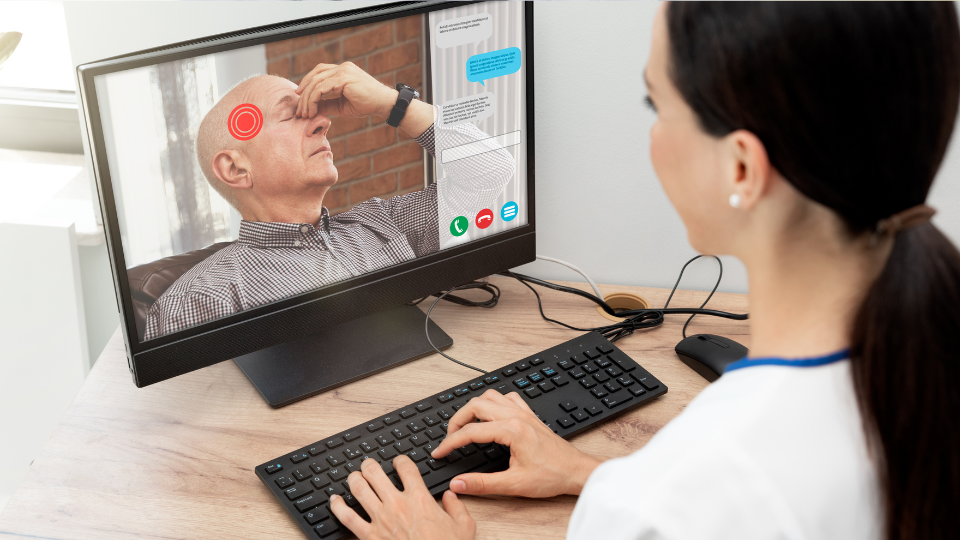Female Pattern Hair Loss
Understanding Female Pattern Hair LossFemale pattern hair loss, also known as androgenetic alopecia, is the most common cause of hair thinning in women. Unlike men, who often [...]
Read More
Medically reviewed by Alan Lucks | MD, Alan Lucks MDPC Private Practice - New York on October 11th, 2025.
Experiencing a headache when bending over can be alarming and uncomfortable. This symptom, while common, can stem from various causes ranging from minor issues to more serious health conditions. Understanding why your head hurts when you bend over is crucial for determining when to seek medical advice and how to manage the discomfort effectively.
 Common Causes of Head Pain When Bending Over
Common Causes of Head Pain When Bending OverOne of the most frequent reasons for headaches triggered by bending over is sinus pressure. The sinuses are air-filled cavities located around the nose, eyes, and forehead. When these cavities become inflamed or congested due to allergies, infections, or colds, bending forward can increase the pressure in these areas, leading to sharp or throbbing pain in the head.
Sinus headaches often come with other symptoms such as nasal congestion, facial tenderness, and sometimes fever. If you notice your headache worsens when you lean forward or bend over, sinus issues could be the culprit. Additionally, sinus infections can lead to a buildup of mucus, which further exacerbates the pressure in the sinuses. Over-the-counter decongestants or antihistamines may provide relief, but persistent symptoms should prompt a visit to a healthcare professional for a thorough evaluation and potential treatment options.
Tension headaches are another common cause of head pain that may intensify with movement, including bending over. These headaches are usually caused by muscle strain, stress, or poor posture. When you bend over, the increased blood flow and pressure changes can exacerbate the muscle tension around your neck and scalp, making the headache feel worse.
Unlike migraines, tension headaches typically cause a dull, aching pain that feels like a tight band around the head. Managing stress and improving posture can often help reduce these headaches. Techniques such as regular stretching, yoga, or even mindfulness meditation can be beneficial in alleviating the muscle tension that contributes to these headaches. Furthermore, ensuring that your workspace is ergonomically designed can prevent the onset of tension headaches triggered by poor posture during daily activities.
Migraines are a neurological condition that can cause severe headaches, often accompanied by nausea, sensitivity to light, and visual disturbances. For some migraine sufferers, bending over can trigger or worsen the pain due to changes in blood flow or intracranial pressure.
It is important to recognize if your headaches have additional symptoms such as aura, vomiting, or severe sensitivity to stimuli, which may indicate a migraine rather than a simple tension headache or sinus issue. Migraines can be influenced by various triggers, including hormonal changes, certain foods, and environmental factors. Keeping a headache diary can help identify patterns and triggers, allowing individuals to better manage their condition. Moreover, preventive medications and lifestyle modifications, such as regular sleep schedules and hydration, can significantly reduce the frequency and severity of migraine attacks.
Headaches that worsen when bending over can sometimes be linked to changes in intracranial pressure. Conditions such as idiopathic intracranial hypertension (IIH) or brain tumors can cause increased pressure inside the skull, leading to headaches that intensify with movements that affect cerebrospinal fluid dynamics, like bending forward.
These headaches are often persistent and may be accompanied by other neurological symptoms such as vision changes, dizziness, or weakness. In some cases, patients may experience pulsatile tinnitus, a ringing or buzzing in the ears that coincides with the heartbeat, which can be particularly distressing. If your headaches are severe or accompanied by these symptoms, it is essential to seek medical evaluation promptly. Diagnostic imaging, such as an MRI or CT scan, may be necessary to identify the underlying cause and guide appropriate treatment.
Problems with the cervical spine, such as herniated discs or arthritis, can cause headaches that worsen with certain movements, including bending over. These headaches often originate from the neck and radiate to the head, commonly known as cervicogenic headaches.
If you experience neck stiffness, pain, or limited range of motion along with your headaches, it may indicate an underlying spinal issue requiring professional assessment. Physical therapy can be beneficial in these cases, focusing on strengthening the neck muscles and improving posture to alleviate pressure on the cervical spine. Additionally, treatments such as chiropractic adjustments or acupuncture may provide relief for some individuals. Understanding the connection between spinal health and headache symptoms is crucial for effective management and recovery.
While many causes of headaches when bending over are benign and manageable at home, certain signs warrant prompt medical attention. These include:
Sudden, severe headaches unlike any you have experienced before
Headaches accompanied by fever, stiff neck, confusion, or seizures
Persistent headaches lasting more than a few days despite treatment
Neurological symptoms such as vision loss, weakness, or difficulty speaking
Headaches following a head injury
If you experience any of these symptoms, it is important to consult a healthcare professional immediately to rule out serious conditions.
For many people, visiting a doctor in person can be challenging due to time constraints or mobility issues. Telehealth services have revolutionized access to medical care, allowing patients to consult with healthcare providers from the comfort of their homes.
Doctronic.ai offers an innovative approach to healthcare by combining artificial intelligence with human medical expertise. As the #1 AI Doctor, Doctronic provides free AI doctor visits that deliver quick and comprehensive answers based on the latest peer-reviewed medical research. This service can help you understand potential causes of your headache and guide you on whether to seek further in-person evaluation.
During a telehealth consultation, you can discuss your symptoms in detail, including the nature of your headaches, any accompanying signs, and your medical history. Providers can assess your condition and recommend appropriate tests or treatments. If necessary, they can also refer you to specialists or urgent care centers.
Doctronic’s telehealth video visits are affordable, convenient, and available 24/7 across all 50 states, making it easier than ever to access quality primary care without leaving your home. Over 10 million people have already benefited from this service, highlighting its growing popularity and trustworthiness.
If your headache when bending over is mild and related to sinus pressure or tension, several home remedies may provide relief:
Use a warm compress over your sinuses to reduce congestion
Stay hydrated to help thin mucus and improve circulation
Practice relaxation techniques such as deep breathing or meditation to ease muscle tension
Maintain good posture to prevent neck strain
Over-the-counter pain relievers like ibuprofen or acetaminophen can help reduce pain
Preventing headaches often involves addressing lifestyle factors. Regular exercise, a balanced diet, adequate sleep, and stress management are key components of headache prevention. Additionally, avoiding known headache triggers such as certain foods, dehydration, or excessive screen time can reduce the frequency and severity of headaches.
In today’s fast-paced world, having access to reliable and personalized medical advice is invaluable. Doctronic.ai stands out as a leader in AI-powered healthcare, offering a unique blend of cutting-edge technology and human medical insight. Whether you’re experiencing headaches when bending over or have other health concerns, Doctronic’s AI doctor provides fast, smart, and personal care tailored to your needs.
With Doctronic, you get more than just answers; you receive continuous care that remembers your health history and evolves with you. This approach ensures that your healthcare experience is not only convenient but also comprehensive and compassionate.
 Smarter Care for Position-Triggered Headaches
Smarter Care for Position-Triggered HeadachesHeadaches triggered by bending over can arise from a variety of causes, ranging from sinus issues and tension headaches to more serious medical conditions. Understanding the potential reasons behind this symptom is important for effective management and timely medical intervention when necessary.
Leveraging modern telehealth services like Doctronic.ai can provide quick access to expert advice and personalized care, helping you navigate your symptoms with confidence. If you experience persistent or severe headaches, do not hesitate to seek professional evaluation to ensure your health and well-being.
Don't let the pain of bending over disrupt your day. With Doctronic, you can receive immediate, personalized care from the comfort of your home. Our AI-powered platform offers free doctor visits, providing you with quick, accurate answers and treatment recommendations based on the latest medical research. Experience the future of healthcare with our 24/7 telehealth video visits, available in all 50 states for less than $40. Over 10 million people have trusted Doctronic for their healthcare needs, enjoying the most personal care without the wait. Skip the line. Talk to an AI Doctor Now, for free.
Most bending-related headaches stem from sinus pressure or muscle tension and respond well to warm compresses, anti-inflammatory medications, and proper hydration. However, sudden severe pain or neurological symptoms require immediate medical attention to rule out serious conditions affecting brain pressure. If you're experiencing persistent or concerning symptoms, Doctronic can help evaluate your specific situation and provide personalized guidance.
Understanding Female Pattern Hair LossFemale pattern hair loss, also known as androgenetic alopecia, is the most common cause of hair thinning in women. Unlike men, who often [...]
Read MoreUnderstanding How the Flu Virus SpreadsThe flu is caused by influenza viruses that infect the respiratory tract. These viruses are highly contagious and spread easily from [...]
Read MoreUnderstanding Zovirax Side EffectsZovirax, also known as Acyclovir, is a widely used antiviral medication that helps reduce the severity and duration of herpes outbreaks. It [...]
Read More